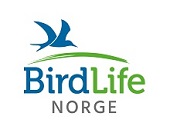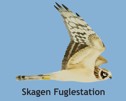
|
|
Carrion Crow The Carrion Crow has reached records numbers since 1990 The same has happened with Black-tailed Godwit, Purple Sandpiper, Black-legged Kittiwake, Shag, Grey Heron, Marsh Harrier, Hooded Crow and Goldfinch. Report from autumn 2022
Weather The average temperature has been higher than normal throughout the year, with 0.8°C higher than normal from July until October, being October 2.3° C above normal. The precipitation has been lower during autumn, except for august when it was 15% above average. There have been many days with strong winds, avoiding the use of nets for 29 days (compared to 25 days in 2021). Ringing The numbers of ringed birds have been 21.9% down average, catching 3 more species than in autumn 2021. The "top 5 species" in the nets have been Blue Tit (1142), Willow Warbler (317), Long-tailed Tit (263), Eurasian Wren (130) and Great Tit (122). The larger thrushes have been ringed in low numbers as the last two years, Blackbird, Redwing and Song Thrush have been ringed between 32% and 80% down average. Only one Fieldfare was caught in the nets (average is 16). Other species of small thrushes such as Robin, Whinchat and Northern Wheatear had also a very bad season being respectively ringed 52%, 88% and 32% below average numbers. Pipits and Wagtails have been ringed between 26% and 60% below average numbers. Many tits have been ringed in low numbers, such as Coal Tit, Willow Tit and Great Tit. However, Long-tailed Tit have been caught in very high numbers, reaching more than twice the normal. All the common warblers have been ringed in low numbers, especially Willow Warbler, Blackcap, Garden Warbler, Lesser Whitethroat and Common Whitethroat, been ringed between 38% and 81% below average. All finches and buntings have shown very low ringing numbers, excepting Lesser Redpoll. Chaffinch, Bullfinch, Greenfinch, Linnet, Siskin, Yellowhammer and Reed Bunting have been ringed between 62% and 86% below average. We have been catching and colour-ringing Rock Pipits with playback and clap-nets with worms. A total of 128 individuals have been ringed by the traps this autumn, which is the second highest number since we started this project in 2015 (trapping 138 in 2021 and 17 birds in 2020). In the standardized ringing we have continued colour ringing all White Wagtails, Stonechats, Rock Pipits and Wheatears, and we have added Whinchat to the colour-ringing project in 2022. Owl’s playback has been used during the nights in autumn when weather was suitable, catching 9 Tengmalm’s Owl on the non-standardized ringing. Observations From 1st of January to 15th November, 243 species have been recorded in the observatory area (9 more than last year). There have been many species this autumn that have been registered in very high numbers, such as, Canada Goose, Mute Swan, Quail, Hen Harrier, White-tailed Eagle, Great Spotted Woodpecker, Peregrine Falcon, Red-backed Shrike, Woodlark, Barn Swallow, Wren, Yellow Wagtail and Rock Pipit. Some others have even reached records numbers since 1990, such as Black-tailed Godwit, Purple Sandpiper, Black-legged Kittiwake, Shag, Grey Heron, Marsh Harrier, Carrion Crow, Hooded Crow and Goldfinch. Also some of the seabirds have been registered in high numbers, such as, Red-breasted Merganser, Guillemot, Razorbill, Red-throated Diver, Great Northern Diver, Manx Shearwater and Gannet. However, some species have been seen in low numbers this autumn and show a decline in the last years: Black-headed Gull, Lesser Black-backed Gull, Common Tern, Arctic Tern, Great Skua and Arctic Skua. The Common Tern have the lowest numbers ever this season, with 10 individuals observed. Most of the common waders have been very low the last years. However, this autumn some of them seem to have shown higher numbers than earlier: Oystercatcher, Golden Plover, Common Redshank and Common Greenshank. Other species though, have been poor such as Common Sandpiper, Green Sandpiper, Wood Sandpiper and Spotted Redshank. It is worth to mention that Lapwing (which has shown a very strong decline since 2008 in the observatory area) has been registered in higher numbers in autumn 2022 than in the last 6 autumn seasons. Although the number of breeding pairs in the whole Lista peninsula (21) has been slightly lower than last year (24), the breeding success has been the highest in the last 10 years (34 fledged chicks in 2022 and 7 in 2021). Only 13 pairs have been recorded in the observatory area since 2015 and just one have had successful breeding since then. In 2022 there was unfortunately no breeding pairs in the lighthouse area. There has been a good number of unusual species in the area during the autumn. We have registered Surf Scoter, Pallid Swift, Mediterranean Gull, Caspian Gull, Yellow-legged Gull, Black Tern, Long-tailed Skua, Pallid Harrier, Black Kite, Common Kingfisher, White-backed Woodpecker, Red-footed Falcon, Bearded Reedling, Pallas´s Leaf Warbler, Radde's Warbler, Dusky Warbler, Blyth´s Reed Warbler, Common Firecrest, Rose-coloured Starling, Red-breasted Flycatcher, Desert Wheatear, Pied Wheatear, Eastern Yellow Wagtail, Citrine Wagtail, Pechora Pipit, Water Pipit, Arctic Redpoll and Rustic Bunting. The Pallid Swift, Radde’s Warbler and Pechora Pipit had never been registered in the lighthouse area before and are, respectively, fifth, second and third record for Adger county. In addition to the fieldwork, the Bird Observatory has continued to guide schools and private visitors in autumn in cooperation with the Lista Wetland Center. Only 5 groups have been guided by the Bird Observatory this autumn, compared to 14 in autumn 2021. Antonin Chesneau (France), Hanelie Sidhu (Germany), Katja Siegemund (Germany), Bård Olsen (Norway), Karina H. Tjørve (Norway), Pep Cantó (Spain), Timo Meißner (Germany) and Gunnar Gundersen (Norway) have been volunteers at the station and helped Rubén Piculo and Aïda López on the fieldwork in autumn 2022. On a post-pandemic year, there has been a considerable number of volunteers, having a smooth season thanks to the daily efforts of everyone on the team. | |||||

| Ringing numbers | ||||||||||
|
| Reportasje fra Lista FS i Aftenposten |

|
| Seasonal deviation | ||||||||||||||||||||||||||||||
|
|
Følg Følg Lista FS på facebook.com |
| Siste 5 på siden |
|
Begynnerkurs i ringmerking: 17.-18. august The annual report for 2023 is available! Fuglefestival 2.-3. september Report from spring 2023 Ny rapport: Måling av elektromagnetiske feltstyrke fra fugleradar ved Lista fyr. |
| Nyheter fra NOF |
|
Ankerfjella IBA trues av... Kraftlinjer og vindmøller... Lille måltrost og den enda... Fine hekkeflåter til ternene... Statsforvalteren sier nei til... Hotell i særklasse Tusenvis av svarttrost: Hvor... Kulturlandskapsarten... |
Lista Fuglestasjon
Fyrveien 6
NO-4563 Borhaug
post@listafuglestasjon.no Tlf: 949 86 793
 |  |


 Only in English
Only in English



